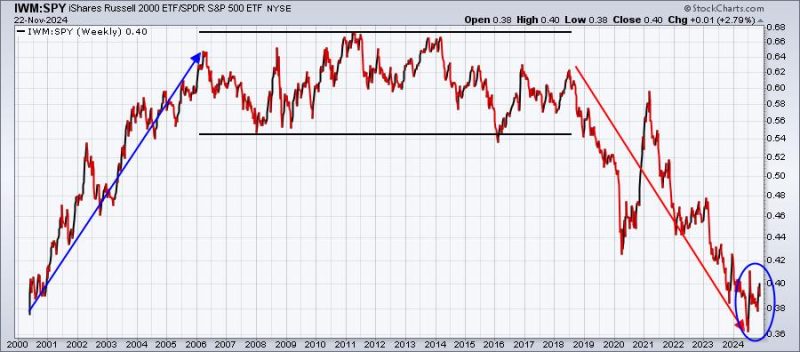Segment 1: Definition of Small and Mid Caps
Small and mid-cap stocks, often referred to as ‘Small caps’ and ‘Mid caps’, refer to the shares of companies with a small and medium market capitalization respectively. For the sake of precision, a small-cap company’s market capitalization usually ranges between $300 million and $2 billion while a mid-cap company is usually valued between $2 billion and $10 billion. This categorization, however, doesn’t hold true across all jurisdictions.
Segment 2: Small and Mid Caps: A Risk-Reward Gamble
Investing in small and mid-cap stocks has its own set of risks and rewards. These stocks often offer the potential for higher growth and greater returns but come bundled with increased volatility and risk. These companies are often in the growth phase, trying to secure their position in the market. They may not be as stable as large caps, thereby exposing investors to more risk as they could be impacted significantly by market fluctuations or economic downturns.
Segment 3: Turning the Lemons into Lemonade
Despite the risks, savvy investors can turn the lemons into lemonade by following a few practical and effective investment strategies.
Firstly, it’s crucial to diversify your portfolio. By spreading your investments across a diverse array of small and mid-cap stocks, you reduce the impact of a blow from a failing company.
Secondly, conducting thorough and diligent research is fundamental. Understanding the company’s financial health, its competitors, future growth opportunities, and market conditions will give investors an edge and help them make informed decisions.
Lastly, having a long-term investment perspective will be beneficial. Yes, small and mid-cap stocks are more volatile, but they also present opportunities for excellent long-term gains. Patience may indeed pay off in such circumstances.
Segment 4: The Bright Side of Small and Mid Caps
As with most things in life, every cloud has a silver lining, and investing in small and mid-cap stocks is no different. While they may be more volatile, they also have fewer ties to global markets. This often means they perform well when larger, multinational operations struggle due to geopolitical issues or localized struggles.
Additionally, small and mid-cap companies can be very innovative, frequently outpacing their larger counterparts in terms of growth. Since they often operate in niche areas of the industry, they often provide a unique opportunity to investors to gain early entry into emerging market segments.
Segment 5: Spotting the Right Caps
Choosing the right small or mid-cap companies requires skill and knowledge. One way to spot possible investment opportunities is by looking at the company’s leadership team. A strong and experienced leadership team can guide the company through the ups and downs of the market.
In addition, studying the company’s financials can provide clarity on its financial health. Factors such as a steady increase in earnings, manageable debt levels, steady cash flow, and good return on equity (ROE) can indicate a potentially good investment.
Finally, being vigilant about market trends and recognizing the sectors that demonstrate the strongest growth can help spot the right investment opportunities.
To summarize, in the complex world of investments, small and mid-cap stocks may appear as lemons due to their volatile nature. However, with the right strategies, thorough research, and a bit of patience, these lemons can indeed be turned into profitable lemonade.




